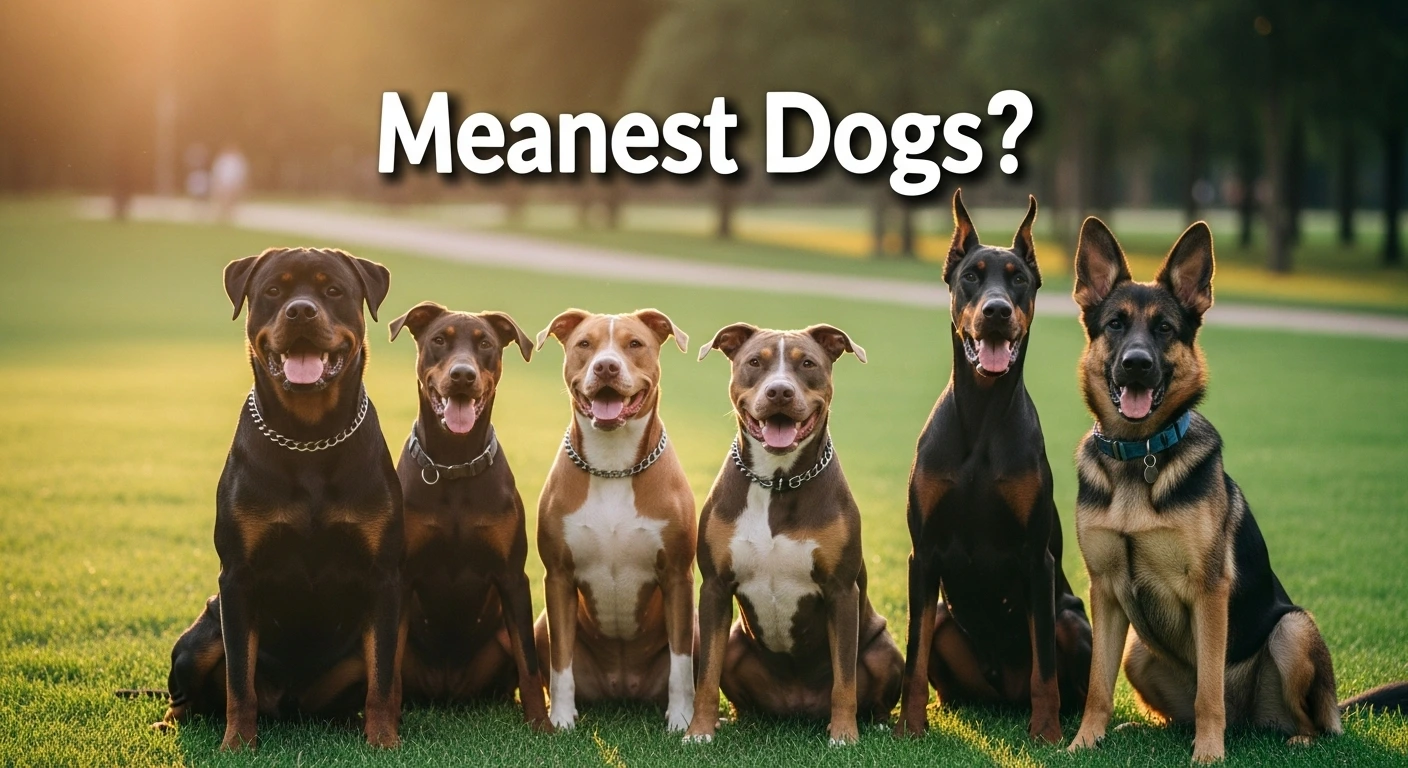Dogs have been living beside humans for over 15,000 years, yet we still can’t seem to agree on which ones are “dangerous.”
Scroll through social media and you’ll find dramatic videos, alarming headlines, and “top 10 meanest breeds” lists that make some dogs look like they’re plotting humanity’s downfall.
But here’s the kicker: science, behaviorists, and real-world experience tell a very different story. This article isn’t just another opinion piece it’s a reality check.
We’ll dig into what actually makes a dog “mean,” unpack how media bias and bad training create fear around certain breeds, and separate fact from fearmongering.
By the end, you’ll know exactly which breeds get an unfair rap, what truly drives canine aggression, and how much of the “danger” is really our own creation.
What Does “Mean” Even Mean?
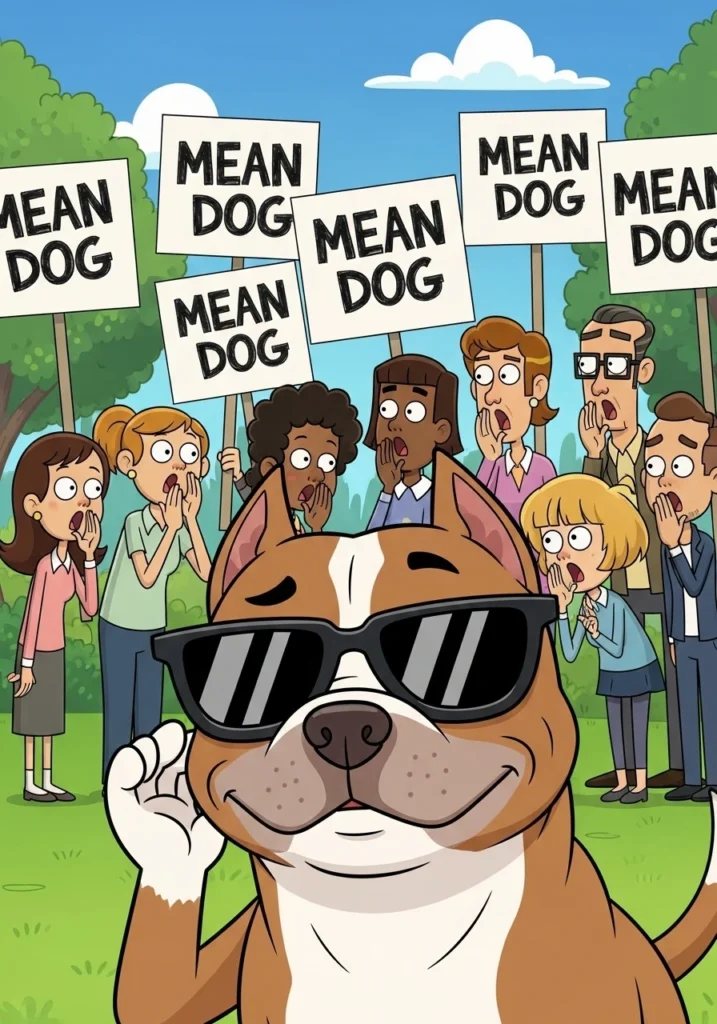
Before we start calling any dog a menace to society, let’s define what “mean” actually means in the canine world.
A “mean” dog isn’t born wanting to attack the mailman. Aggression in dogs is usually a reaction—fear, pain, anxiety, frustration, or protectiveness. Dogs communicate through body language. When we ignore their signals, that’s when things can escalate.
Common Triggers of Dog Aggression
Here’s what can push a dog’s buttons:
- Fear: Most bites happen when a dog feels cornered or scared.
- Territorial instinct: Some breeds just take “private property” signs seriously.
- Protectiveness: Try touching a mama dog’s puppy—bad idea.
- Pain or illness: A usually sweet pup can snap if they’re hurting.
- Frustration: Like people, dogs have bad days too (especially when you skip walk time).
So yeah, aggression isn’t personality it’s communication gone wrong.
The “Big Dog Bias”: Why Size Skews the Story
Here’s the funny thing: smaller dogs bite more often than big ones.
Yup, your friend’s 5-pound Chihuahua is statistically more likely to nip than a Rottweiler. Shocking, right?
But we don’t see Chihuahuas on “dangerous dog” lists because, well… their bites don’t send people to the ER. Insurance companies rank “dangerous breeds” based on damage potential, not frequency.
So while Rottweilers, Pit Bulls, and Dobermans get all the bad press, little guys like Dachshunds and Beagles quietly rack up bite stats. It’s like judging who’s “meaner” based on who causes more property damage, not who starts the fight.
20 Signs Your Dog Doesn’t Love You (Even if You Think They Do)
Meanest Dog Breeds (According to Reputation)
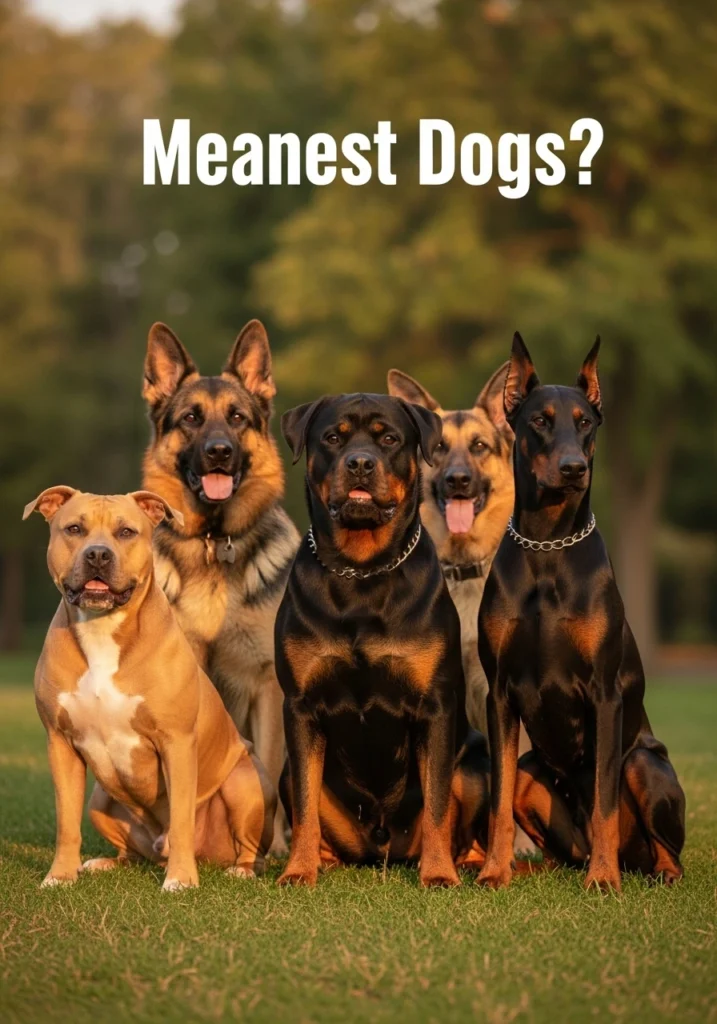
Now that we’ve cleared the air, let’s talk about the breeds everyone loves to blame and what’s actually true about them.
1. Chihuahua: The Tiny Tyrant
You knew this one was coming. The Chihuahua is the definition of “small but mighty.” These dogs have zero chill when it comes to strangers. They bark, they growl, and they’ll happily take on a dog ten times their size.
But are they evil? Nope. They’re protective, insecure, and overattached to their humans. Imagine being six inches tall and living in a world full of giants you’d probably have an attitude too.
Verdict: Not dangerous. Just sassy with trust issues.
2. Dachshund: The Badger Hunter Turned Drama Queen
They look adorable, right? But Dachshunds were bred to dig into badger holes and fight wild animals underground. That fearlessness didn’t just vanish when they became couch pets.
They’re stubborn, territorial, and high-energy, which can make them snappy if they’re bored or untrained. Basically, don’t let the cute sausage body fool you.
Verdict: Prone to attitude problems if bored but manageable with firm training and fun playtime.
Beat Dog Boredom: Simple Games That Tire Out Their Brain (and Calm Their Energy)
3. Cocker Spaniel: The Sweetheart With a Mood Swing
Cocker Spaniels are famous for being loyal and affectionate but some lines of the breed suffer from something called “rage syndrome.” It’s rare, but it causes sudden, unpredictable aggression.
That said, most Cocker Spaniels aren’t dangerous at all. Aggression usually happens when they’re anxious, untrained, or overprotected. Give them structure and affection, and they’ll be all wiggles and cuddles.
Verdict: Sweet but sensitive. Don’t baby them too much.
4. Basenji: The Silent Rebel
Meet the Basenji, a dog that doesn’t bark it yodels. Sounds fun until you realize this African breed is famously independent and hard to train.
They’re intelligent but stubborn, and they have a strong prey drive. Small animals? Consider them fair game. That doesn’t make them mean, though it just means they’re wired for the hunt.
Verdict: High-maintenance, not hostile. Think of them as the introvert of the dog world aloof but loyal when they trust you.
5. Terriers: The Feisty Bunch
“Terrier” basically means “earth dog,” and these little powerhouses were bred to chase, dig, and kill vermin. Energy? Off the charts. Temper? Depends on the training.
Without proper exercise or structure, they can turn into bite-sized chaos. But give them a job like agility training or fetch marathons and they’re total sweethearts.
Verdict: Spirited, not scary. Just don’t let them get bored.
6. Chow Chow: The Regal Lion Dog With Attitude
Chow Chows look like fluffy teddy bears, but they’re not exactly cuddle bugs. Historically, they guarded temples and livestock in China. That protective streak still runs deep.
They’re reserved, serious, and sometimes territorial but with early socialization, they can be gentle companions. Think of them as the stoic bodyguards of the dog world.
Verdict: Proud and independent, not mean just don’t mistake their silence for affection.
7. Wolf Hybrids: Nature’s Wild Card
Now, this one’s tricky. Wolf hybrids (crosses between wolves and domestic dogs) can be unpredictable because of their mixed genetics. Some act like dogs, others lean toward wild instincts.
They’re not inherently evil, but they’re not for first-time owners. Without expert training, they can develop anxiety and defensive aggression.
Verdict: Wild by nature, not nurture. Respect their instincts or don’t own one.
8. Rottweiler: The Gentle Giant With a PR Problem
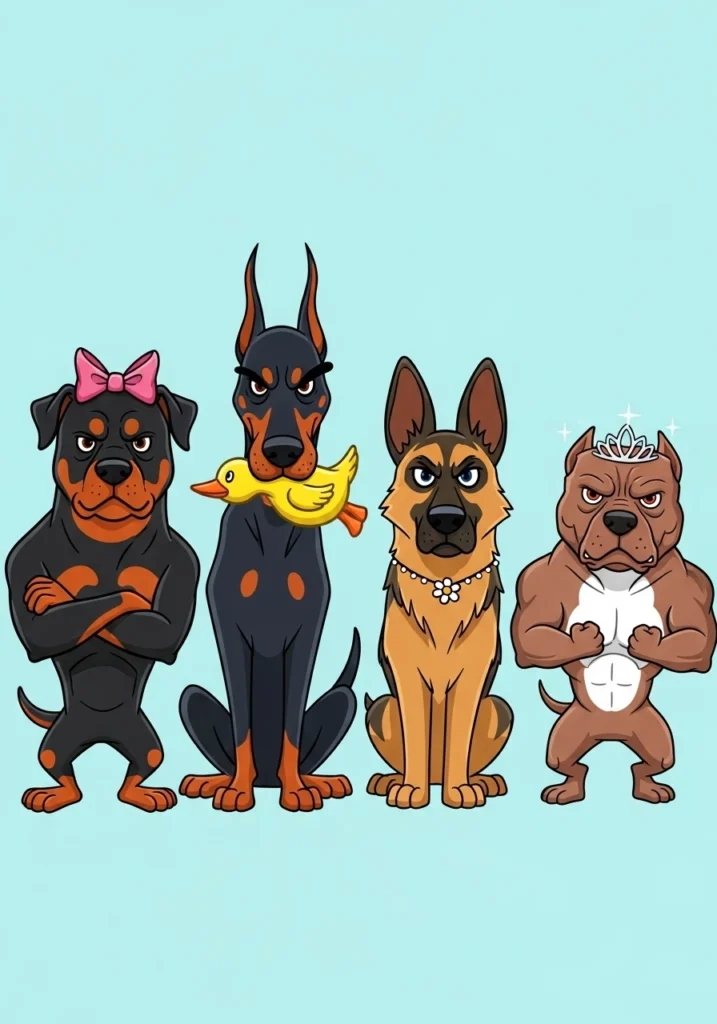
Here’s where things get personal. I’ve met Rottweilers who’d rather cuddle than chase, yet they’re always on “dangerous breed” lists. Why? Because of size and strength.
When poorly trained, yes, they can cause serious harm but so can a badly raised Labrador. The difference? Media coverage. A Rottie bite makes headlines; a Corgi bite doesn’t.
Verdict: Powerful but loyal. Great dogs for confident owners who provide structure.
9. Pit Bull Terrier: The Most Misunderstood Breed on Earth
Pit Bulls have been labeled “mean” for decades, mostly due to irresponsible owners and illegal fighting rings. In reality, they’re incredibly affectionate, loyal, and eager to please.
Every study that actually measures temperament ranks them in the middle of the pack friendlier than many toy breeds. If anything, they suffer from too much love; they’ll lick you to death before they bite you.
Verdict: Lovers, not fighters if raised right.
10. German Shepherd: The Overachiever With Trust Issues
These dogs are smart. Like, “figure out how to open the fridge” smart. They were bred for police work and protection, so they’re naturally alert and wary of strangers.
Their loyalty can sometimes turn into possessiveness, but with proper training, they’re one of the most reliable and disciplined breeds you can own.
Verdict: Brave, not mean. Just don’t try to sneak into their territory uninvited.
Why “Mean” Breeds Aren’t the Problem
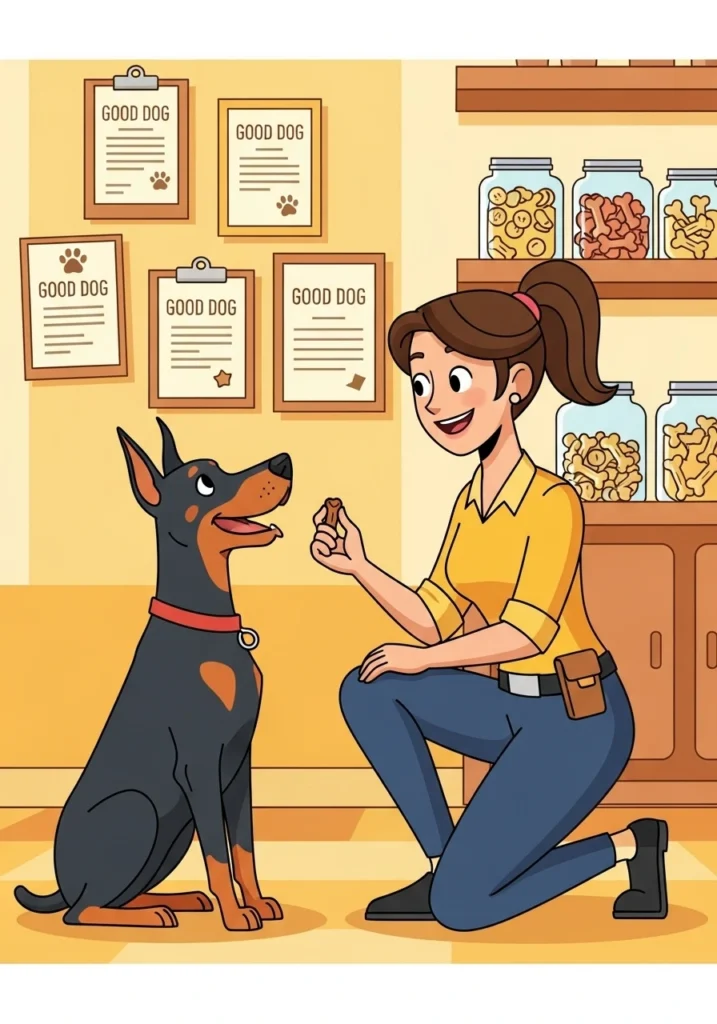
Let’s get one thing straight: there are no bad dogs, only bad situations.
When we label entire breeds as “dangerous,” we ignore the real issue how humans treat and train them. Socialization, structure, and consistent boundaries matter more than genetics.
Want proof? Shelter workers see it all the time. A “dangerous” Pit Bull that’s been trained with love can be the gentlest dog in the building, while an untrained toy poodle might bite anyone who looks at it wrong.
It’s all about nurture, not nature.
How to Prevent Aggression in Any Dog
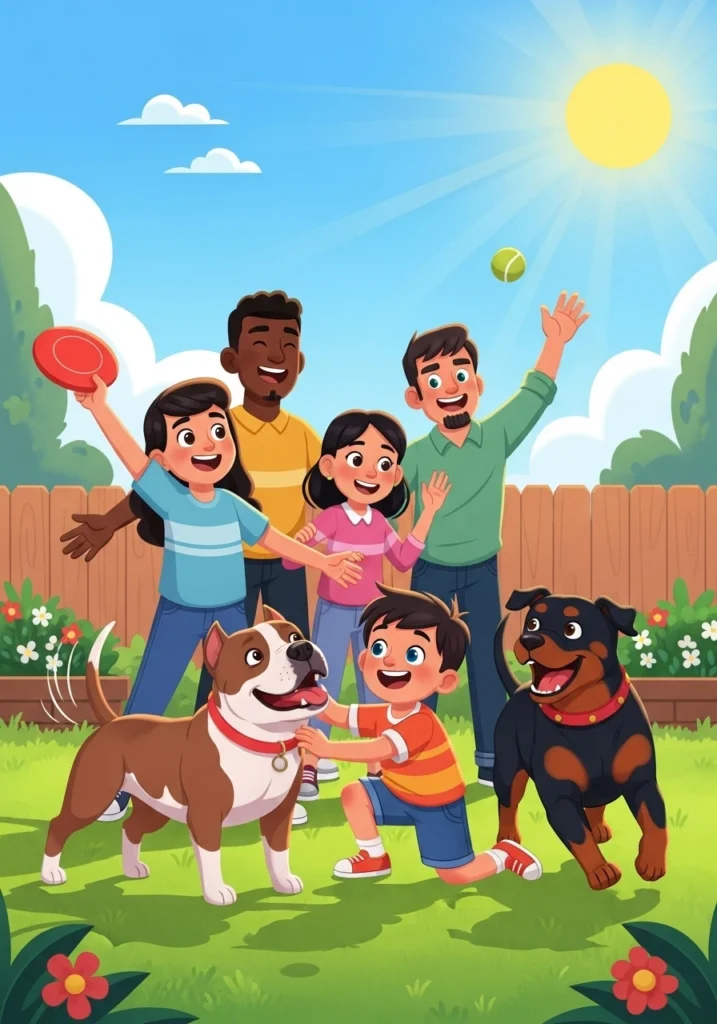
You don’t need to be a dog whisperer to raise a calm, confident pup. You just need patience, consistency, and a bit of empathy.
Here are a few simple but game-changing tips:
- Start socialization early. Expose your pup to different people, pets, and places.
- Use positive reinforcement. Reward good behavior don’t punish bad behavior.
- Stay calm. Dogs feed off your energy. If you freak out, they’ll match your mood.
- Exercise daily. A tired dog is a good dog. Period.
- Respect their space. Especially when eating, sleeping, or caring for puppies.
In short, treat your dog like you’d want to be treated after a long day: with patience and understanding.
Media, Myths, and Mislabels
Let’s be real headlines love drama. “Pit Bull Attacks Man” gets more clicks than “Golden Retriever Chews Couch.”
But here’s what the stats actually show:
- Small breeds like Chihuahuas, Dachshunds, and Jack Russells are more likely to bite.
- Larger breeds cause more serious injuries, which skews perception.
- Temperament tests rank “scary” breeds like Rottwe
